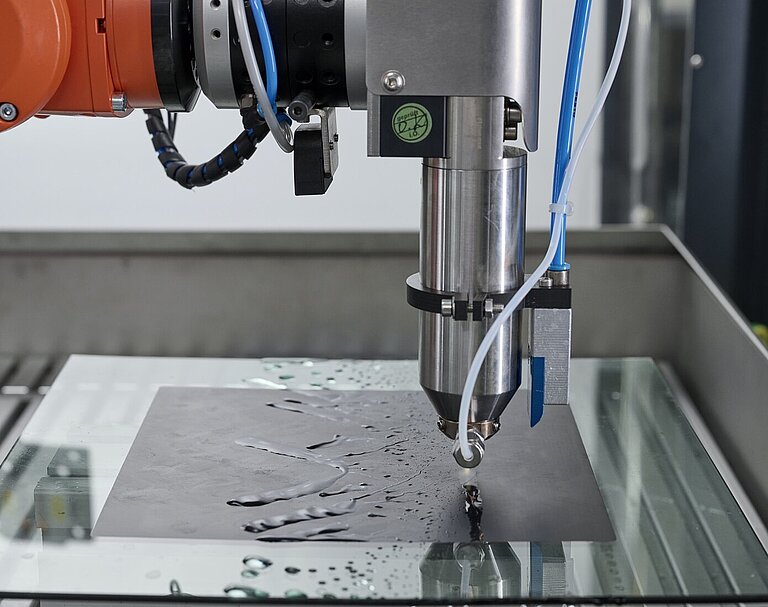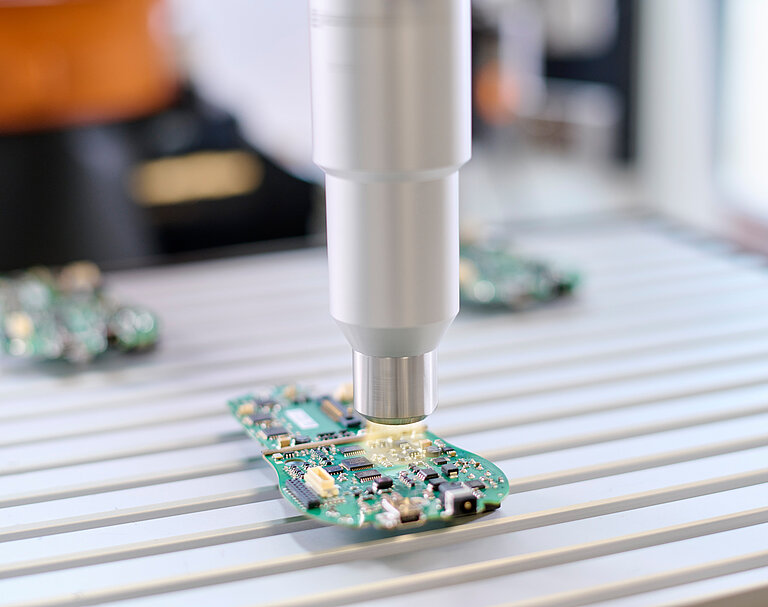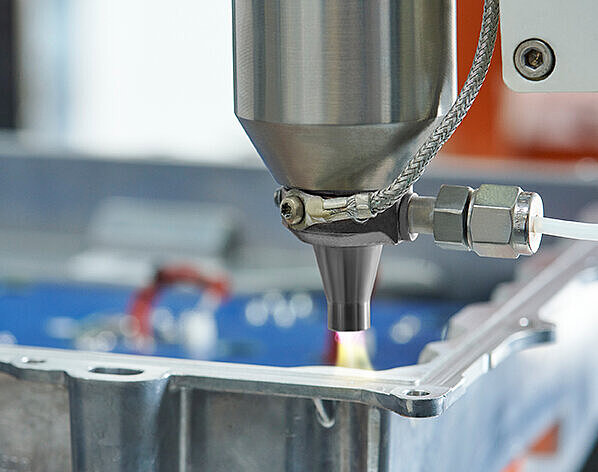Industrial Plasma Pretreatment with Plasmatreat
Surface modification through plasma treatment, which enhances material properties across various surfaces, has long captivated the interest of many industries. Today, cutting-edge processes ensure precise control over plasma generation and application, facilitating reproducible results. This capability enables extensive surface cleaning through direct plasma action and allows for structural modifications that enhance desired material properties. Users benefit from a wide array of available plasma processes:
Vacuum or low-pressure plasma - Holistic treatment in a batch process

One well-established plasma process for the industrial pretreatment of components is vacuum or low-pressure plasma. This process utilizes electromagnetic high-frequency fields to generate plasma between two electrodes. The plasma is produced within sealed chambers under vacuum conditions, typically ranging from 10⁻³ to 10⁻⁹ bar.
For this process, the components are treated in a separate pressure chamber, isolated from the production line. Within the vacuum chamber, gases or gas mixtures are ionized through the application of electromagnetic fields, transforming them into a highly reactive plasma state.
The surface properties of the treated components can be precisely tailored by selecting the appropriate gas composition (such as air, nitrogen, or oxygen) and the energy coupling method, which may involve DC, kHz, MHz, or GHz frequencies.
In the low-pressure plasma process, components are treated across a large surface area. However, a waiting period is required before further processing can occur, making the procedure relatively time-intensive. This is particularly challenging for the industrial treatment of substrates in large quantities.
Find an overview over Plasmatreat's low pressure plasma systems here.
Atmospheric plasma solutions - High-efficiency plasma cleaning, activation and nanocoating

Atmospheric-pressure plasma pretreatment is one of the most efficient methods for cleaning, activating, or coating a wide range of materials, including plastics, metals (e.g., aluminum), glass, recycled materials, and composites.
Unlike low-pressure plasma technology, Openair-Plasma® technology operates without the need for a dedicated chamber system. This is possible because Openair-Plasma® leverages advanced surface modification techniques under atmospheric pressure conditions.
This unique capability allows the technology to be seamlessly integrated into production lines, even with robotic controls, at a low cost. The versatility of Openair-Plasma® makes it a vital technology for innovative surface pretreatment applications.
Atmospheric-pressure plasma treatment is particularly cost-effective and serves as a popular alternative to low-pressure plasma and corona processes.
Explore an overview of Plasmatreat's atmospheric-pressure plasma systems here.
The high intensity of Openair-Plasma® treatment makes it possible to significantly streamline the entire process.
Openair-Plasma® - Inline integrated for a targeted, selective treatment

Atmospheric plasma is generated at normal pressure, eliminating the need for low-pressure chambers. Thanks to Plasmatreat's patented Openair-Plasma® nozzle technology, it is now possible to integrate an efficient, gentle, and potential-free plasma process directly into manufacturing workflows. This inline capability allows for seamless integration into existing production lines.
Openair-Plasma® utilizes compressed air to modify the surface properties of treated materials. To achieve this, Plasmatreat has developed specialized nozzles that deliver the plasma jet with pinpoint accuracy to the substrate. The nozzle heads and process parameters, such as plasma jet intensity and application distance, are precisely tailored to each application. Site-specific factors, such as component transport speed, are also carefully considered—one of Plasmatreat’s key strengths.
This cutting-edge plasma technology is versatile, suitable for all surface types, and achieves microfine cleaning as well as high activation of substrates.
Learn more about Openair-Plasma® systems for various applications processes.
FEATURES &
ADVANTAGES
Openair-Plasma® technology compared to other pretreatment processes:
- High process reliability: Openair-Plasma® technology is distinguished by high fail-safety and process reliability.
- High cost-effectiveness: High process speed, even in multi-shift operation, and lower scrap rates provide high process efficiency. Because it allows for flexible material selection, the Openair-Plasma® process also facilitates the use of more advantageous materials.
- High degree of activation: Unlike corona treatment, Openair-Plasma® permits a high degree of activation of the surfaces to be treated.
- Large process window: Openair-Plasma® permits a large process window: The danger of thermal component damage is extremely low in comparison to flaming.
- Easy to integrate: In contrast to mechanical processes, like roughening and sand or aluminum oxide blasting, Openair-Plasma® can easily be integrated inline in existing processes.
- Environmentally friendly: The Openair-Plasma® process makes it possible to treat surfaces with solvent-free and VOC-free methods. Unlike electrochemical processes, such as galvanizing or galvanically-supported pickling and chrome plating, wet chemistry is not required.






